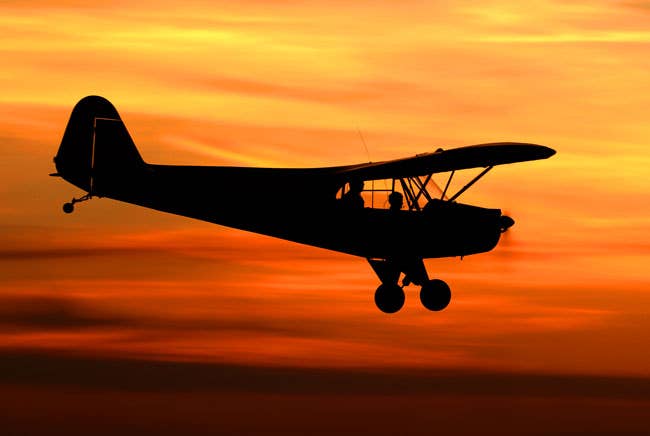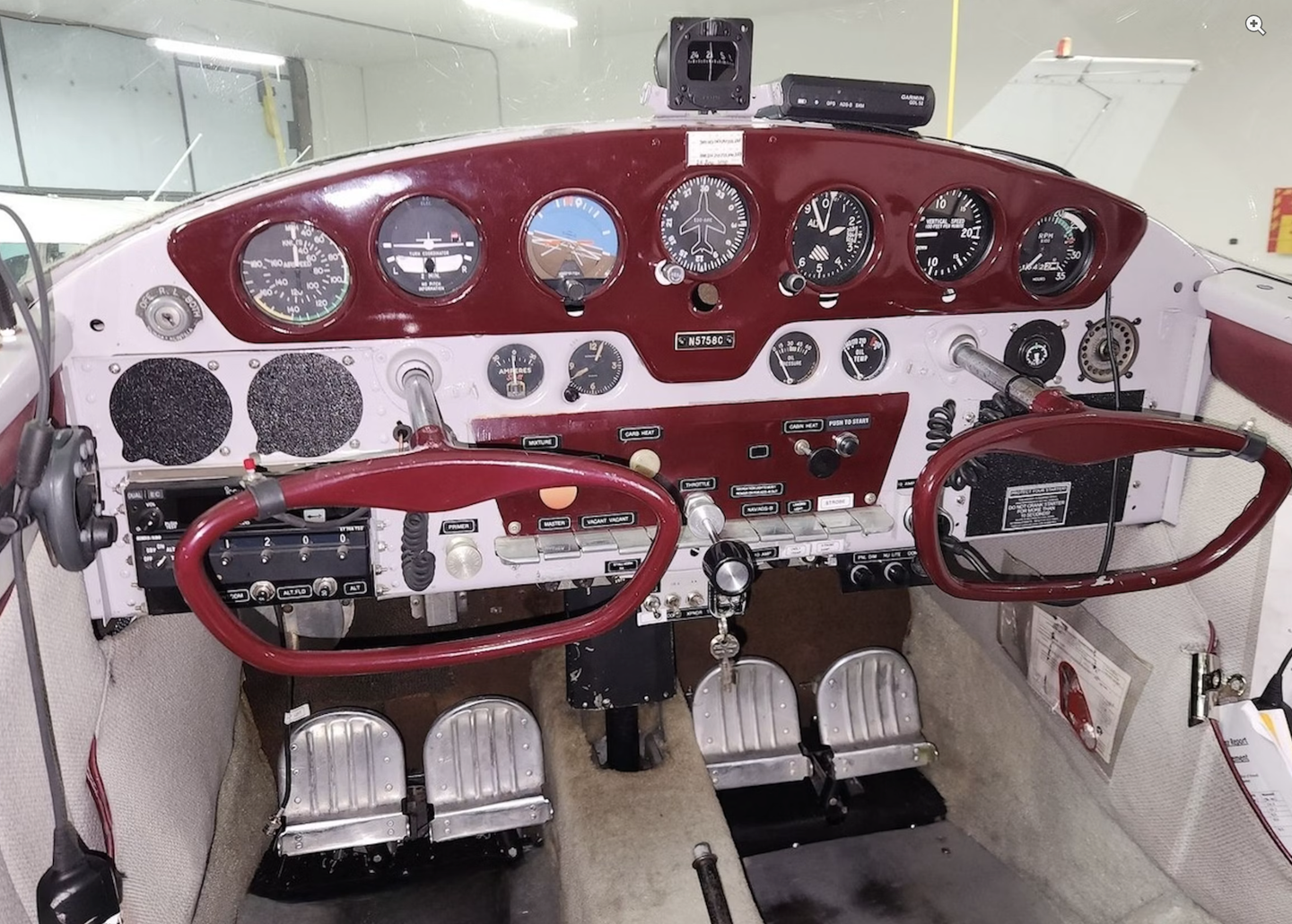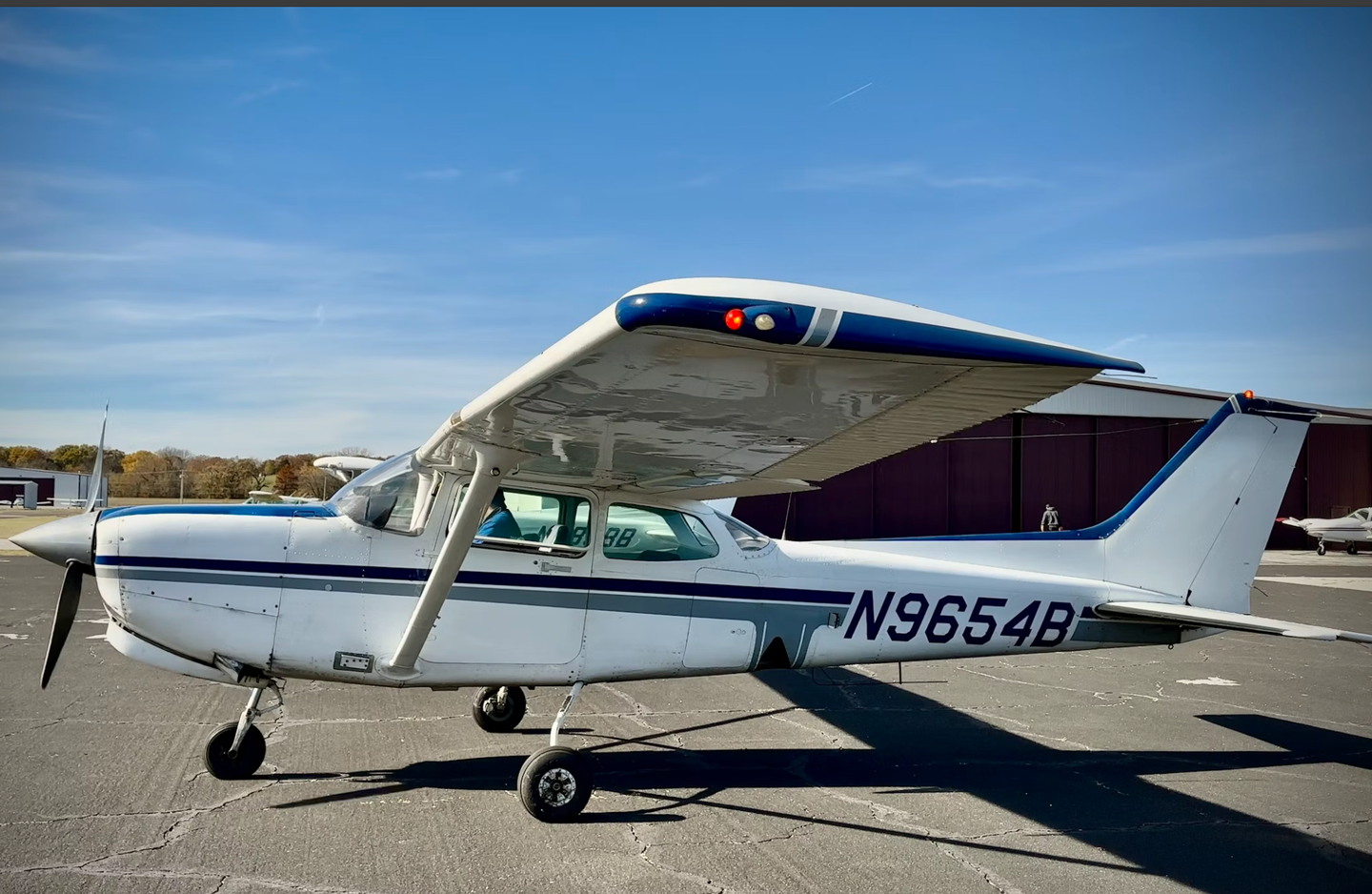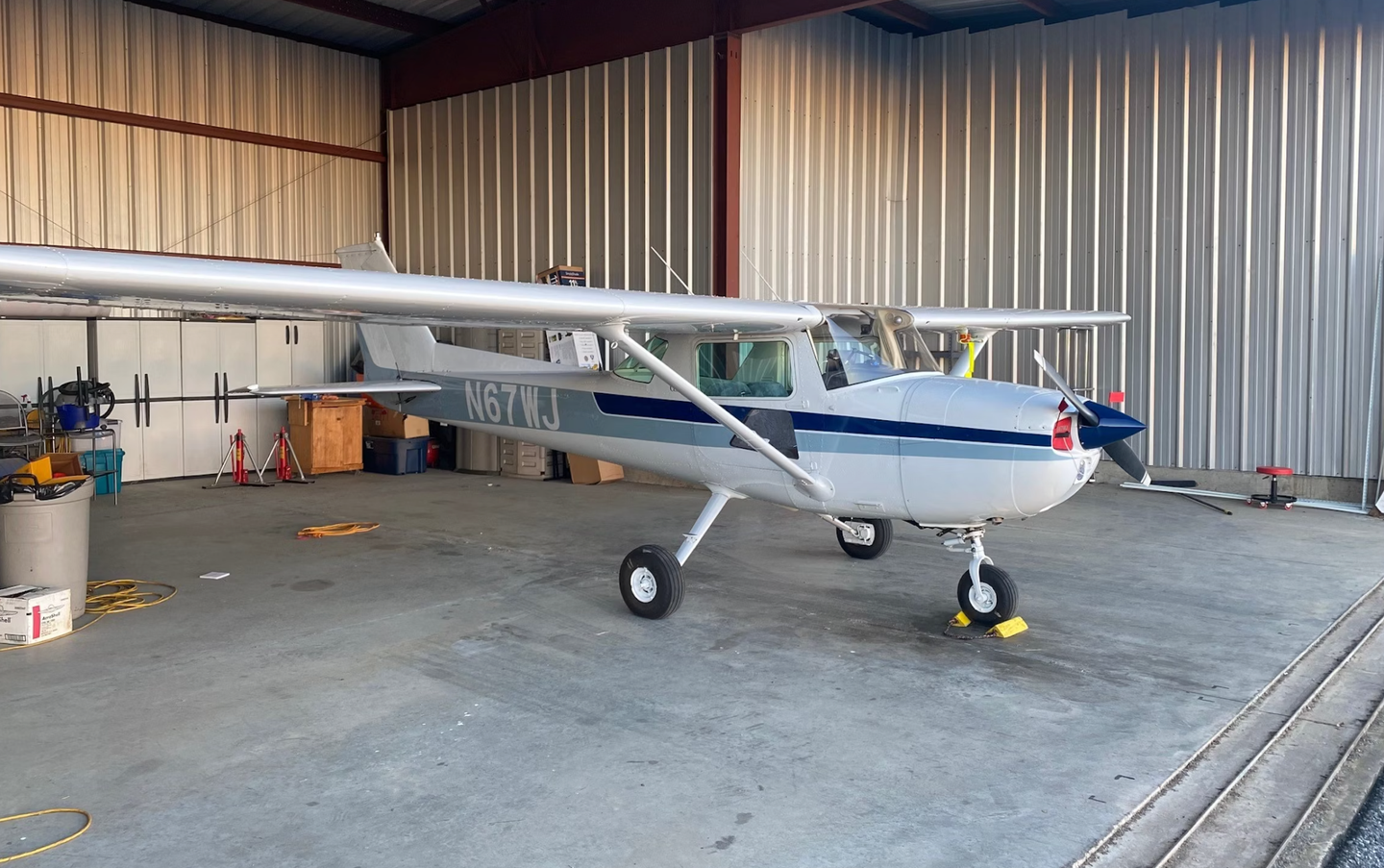The 9 Most Beautiful GA Airplanes
There are a lot of amazing-looking airplanes in the general aviation universe. We pick the nine most beautiful ones.

Photo by Marcos Lázaro Burigo
It's no secret that we pilots love airplanes, though the reasons why we do are, well, not so much mysterious as wide ranging and, at times, hard to pin down precisely. We love airplanes for what they are, where they can take us, and for reasons that are more related to aesthetics than utility. We feel that airplanes, at least some of them, are beautiful to behold. Part of that is the emotional mystery behind airplanes. They are, after all, doing something that, until 150 years ago, was impossible. So we have a reverence for aircraft that at its root is steeped in wonder.
Not everyone believes that beauty is a mystery. For the past couple of decades, mathematicians have been attempting to quantify what we find beautiful, notably in human faces, by probing the relationship of parts and their arrangement to the whole and trying to arrive at some kind of equation of beauty. Other scientists who are interested in the question of what we find beautiful are teaching computers to learn to replicate the judgments we make in finding things beautiful, so far mostly in photos of nature and people's faces and not airplanes. At least not yet.
In the process, we've surely picked a few that hardly anyone would disagree with. You'll see. At the same time, it's almost certain that we've picked a couple that you might disagree with, perhaps strongly.
And as you'll notice, too, we've only selected conventionally certificated GA planes, so you won't see any P-51s, Constellations or Lancairs here, even if they are sometimes under the GA umbrella. We've also stuck to piston-powered planes, so bear that in mind, as well.
So, without further ado, we present nine of the most beautiful airplanes in GA history.
Cessna Cardinal
One of the most beloved singles in the company's long history, the Cessna model 177 Cardinal is proof that beauty isn't necessarily synonymous with utility. Cessna introduced the Cardinal as a replacement for the somewhat ungainly-looking 172 Skyhawk, but it never came close to that, in part because the Skyhawk is a remarkable airplane, though admittedly one that didn't win many beauty contests. The Cardinal, on the other hand, is the opposite: a gorgeous plane that's limited in terms of utility. Like its older Cessna hangar mate, the Cessna 195, the Cardinal makes use of a cantilever wing, and while the Cardinal was intended by Cessna to be the replacement for the 172 Skyhawk, the plane never came close to competing with the Skyhawk as a do-everything flyer. Instead, the 177 became an iconic personal airplane, one that's adored as much (or more) for its beauty as it is for its utility.
While the wing is definitely the thing that sets the Cardinal apart, Cessna designers did a masterful job of integrating the silky-smooth lines of the wing into the rest of the bird, to the point that the tail on early models was pretty but not particularly effective. Other distinctive features include the forward placement of the front seats, the low-slung gear, the wraparound windows---the Cardinal is perhaps the best sightseeing Cessna ever---and the cool wheelpants. The retractable-gear version, while a bit busy-looking on the ramp, is a true beauty once airborne, and opinions vary on which of the models is the prettier.
Cessna 195
The Cessna 195 is one of the oldest planes in our lineup, and its beauty is inextricably tied both to the technology of the era and Cessna engineers' ingenious attempts to find ways around those technologies. The look of the Cessna 195---dubbed by the company the "Businessliner"---is dominated by a handful of features that are impossible to miss. First is the big seven-cylinder Jacobs 300 radial engine up front (and the gorgeous annular cowling that surrounds it), which gave the plane a lot of juice and a serious attitude. Second, the plane is unmistakably and unapologetically a taildragger, which was by the mid-1940s, when the nosewheel began to dominate, as much a statement of philosophy as a configuration choice.
Though inspired by designs from the 1930s, the 195 didn't fly until after the war, in 1945. As such, it's an amalgam of prewar thinking and WWII-era materials. Despite its vintage (even then) radial engine and taildragger configuration, the plane features modern sheet-metal construction both inside and out. Another signature feature of the 195 is its beautiful cantilever (strut-less) wing, the last high-wing Cessna to go without struts until the Cessna Cardinal in the late 1960s. While the '40s were giving birth to new music and new fashions, the interior design of the 195 is Art Deco classic. Featuring beautiful branding details and a number of luxury-level flourishes, the generous cabin of the 195 is done up with an eye to craftsmanship and beauty as opposed to the bare-bones look of Cessnas to come.
Luscombe Silvaire
The Luscombe Model 8 Silvaire was produced in an era where there was no shortage of affordable two-seat light planes, including the prototypical example, the Cub. The Silvaire was different, though. In terms of configuration, the plane is nothing unusual. A two-seat taildragger with cozy side-by-side seating, the Silvaire, if anything, was a bit harder to land than its close competitors, thanks to its narrow gear and slightly higher center of gravity. Still, with its sheet-metal design (the wings were originally covered in fabric), the Silvaire was slipperier than its rivals by as much as 20 knots. People loved the plane and flocked to it---nearly 6,000 were built over the years---though its attraction wasn't just for its performance, and it certainly wasn't for the elbow room.
For many Luscombe Silvaire lovers, it was the beauty of the thing. The Silvaire name resonated, and while many were bare metal birds, and hence were literally silver, many others were painted, and fans of the model make convincing arguments for each approach. Either way, the beauty is undeniable, though admittedly it's hard to know just where to give credit. The plane is just a beautifully balanced delight, a shiny sheet-metal dragonfly of a plane, light, agile, silvery and!timeless.
Beechcraft Duke
A pressurized twin with good speed and great range, it filled a coveted niche and competed directly against Cessna's pretty 421 Golden Eagle. The pilots who bought a Duke were inspired by its looks. They were the kind of customer who might have a Porsche 911 in the garage at home. They were people who liked fast machines that also looked fast. Designers of the Duke achieved its striking look by taking the concept of "swept back" and applying it everywhere, and it worked. The combination of the swept tail, swept winglets, elongated pointy nose---like that of a hypersonic jet---and angular windows created a look that sold many a Duke before the buyer even climbed inside.
Cessna 310
It's hard to make a twin look pretty. By definition you've got to hang those engines somewhere, and sticking them on the wing is about the only thing that makes practical sense with a piston-powered multi-engine model. So the design achievement of Cessna with its archetypal 310 light twin is remarkable. Unlike some models, the 310, which was produced from 1954 until 1980, seemed to look better with each passing model upgrade. The long, low-engine nacelles, the pointed nose and rakish tail all added to the allure. Like many twins, the early 310 suffered from a lack of range, so tip tanks were added.
As opposed to some planes, on which wingtip-mounted tanks look like tacked-on afterthoughts---which they pretty much are---on the 310, the effect is pleasing. They somehow improve the appearance of the plane. Even more, the effect is to take the Buck Rogers spacecraft feel of the 310 and amplify it, making it one of the slickest-looking planes you'll ever meet on the ramp, even with those engines hanging off all over the wings. Inside the 310 is arguably even cooler, at least those rare ones with their original interiors intact. Over the years, Cessna interior designers worked their magic on the plane like none other in the inventory. There were plaid interiors, Western-themed ones and even butterscotch tweed versions. Many of those masterful time capsules have been sewn over in the intervening years, covered with simulated leather for what is perhaps a more saleable used plane but one that lacks the time stamp and personality of the original.
Globe Swift
The genesis of the Globe Swift is an odd one. Developed from an existing design, the Culver Cadet, the Swift somehow bore only a passing resemblance to its inspiration. While the Cadet was a decent-looking airplane, the Swift is a true beauty. Introduced in the postwar era, the Swift was, in a few important ways, the embodiment of the most famous fighters of the day in a miniaturized, and to be honest, an underpowered, package. An all-metal taildragger with a sleek low wing, the Swift mimicked the shape and style of planes like the American P-51 Mustang or British Supermarine Spitfire. And the Swift was up for the comparison.
Though it wasn't intended to go fast---the first model had an engine of just 85 hp---the Swift had a lot of style. With spry handling qualities and a big glass canopy (that looked like a sliding canopy even if it wasn't), the Swift is an airplane that makes it easy to check your six, if you're so inclined. In the end, Globe, with the help of fellow manufacturer TEMCO, built more than a thousand of the little two-seaters, though within a few short years it was building far more of them than it could sell. Today, the Swift is a hot used plane for pilots looking for flying fun on the cheap. Many modify it with a true sliding canopy and a more powerful engine while swapping out, in true warbird fashion, the classic yokes for arguably even more classic sticks.
Beechcraft Bonanza
What a difference a few years make, especially when those years were the era of World War II and the world had changed irrevocably. In terms of aircraft design, there's no better dichotomy to illustrate the change than two Beechcraft products separated by about a decade in calendar time but by eons in terms of approach, mission and aesthetics. When it created the Staggerwing in the early 1930s, the design team at Beechcraft came out with an Art Deco masterpiece, all finely figured wood and excess. The Bonanza, in contrast, was minimalism, efficiency and performance personified. The all-metal speedster was and is beautiful, but in such a different way than the Staggerwing that it seems impossible the two came from the same century, never mind the same side of Wichita, Kansas.
With its all-metal design (there was a little fabric on the early models), cool V-tail and retractable nosewheel landing gear, the Bonanza was more modern than any production light plane that would appear for the next decade. It didn't rival the most modern automotive design standards; it foresaw future approaches. On the Bonanza, the V-tail is the defining component. Indeed, it's hard to come up with another aircraft feature that so immediately confers the essence of the machine. The tail isn't without its critics, though few find fault with its style. When Beech came out with the straight-tailed Debonair model in the early 1960s, some pilots went in that direction while others pointed at the vertical tail of the new offshoot, shook their heads and pronounced, "That's not a Bonanza."
Staggerwing Beech
Technically designated the Beech Model 17, this beauty from a bygone era is known almost universally as the Staggerwing Beech. As only a few other planes, it's named after a design feature---the placing of the lower wing staggered ahead of the upper one. Designed way back in 1933, the plane was born during the era of high-stakes air racing, where speed was pursued at all costs. The Staggerwing, with its dramatic lines and short-coupled fuselage, looked for all the world like it would be right at home at the Cleveland Air Races, rounding pylons with the fastest air racers of the day.
Unlike some designs with radial engines, the Staggerwing's look wasn't dominated by the radial engine---the plane was outfitted with a number of different radial engines, from 280 to 710 hp, over its lifetime. If anything, the shape of the plane underplayed the powerplant, making it something other than the driving element of the look of the craft. With small, short-rise windows, the fuselage, as was common in the day, looks more like a fortress than an observatory, but again, somehow that adds to the mystery and intrigue of the design. Some think of the Staggerwing as a rare bird, but Beechcraft actually sold nearly 800 of the planes in its lifetime, which stretched out until the last delivery, in 1949. Beauty dies hard.
Piper J-3 Cub
You might be asking why we would choose the Piper Cub as one of the most beautiful GA airplanes ever. Good question. By all objective metrics, the Piper J-3 is all knees and elbows, a plane that looks like it was designed by committee, with a boxy fuselage, a too-long wing, its belly low to the ground and its nose sporting engine parts sticking out here and there. But when pilots see a Cub, we see a thing of beauty, and that might be because the plane is so central to our identity as pilots, whether we've flown one of them or not.
And the parts, far from looking thrown together, complement each other, the big, long glider wing providing shade for a pair of seats set in tandem, its horizontal Dutch door providing as much a maze and obstacle as a portal, and the cowling not ill-designed but intentionally showing off its buried treasure, 65 horses of just the right kind of sound. And then there's the best part, the Cub yellow, the lightning bolt, the little Cub logo, all of which are odd on their own but blend together to create an identity that sings like a clear Pennsylvania morning as the tires clip through the tall grass headed airborne. Beautiful? Beautiful beyond description.
Now it's your turn! Tell us which beautiful GA plane we missed by leaving a comment or emailing us at editor@planeandpilotmag.com.
To get aviation news delivered to your desktop or mobile device, sign up for our weekly eNews.

Subscribe to Our Newsletter
Get the latest Plane & Pilot Magazine stories delivered directly to your inbox






